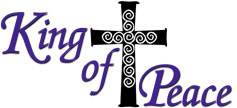
Get Connected Christians speak of God as a Trinity, but most of us
rarely describe what that means to us and for us. Yet, it is in understanding who God is
that we can best understand who we are to be. The Bible reveals God as three persons who are
completely interconnected as one God. This three equals one equation does not fit with
math as we learned it and leaves many mystified at why the Church bothers. It is worth noting that the early Christians saw no
contradiction between their belief in God, who they described as Father, Son and Holy
Spirit, and their belief that God is one. The early Christians also rejected the idea that
God is known in three modes—first as Father, then as Son, and later as Holy Spirit,
while never being all three at once. The Christian Church has always asserted that God is
one substance, in three distinct persons. The Austrian philosopher Wittgenstein said that we
should not be surprised when our language falls short in the task of describing God. He
noted that human words are completely incapable of describing something as mundane as the
aroma of coffee. How much more difficult is it to describe God in our own words? However, this belief in the Trinity seemed to defy the
laws of science and good common sense. How could one be three or three be one? Some have
described the Trinity using the example of H20 in the forms of water, ice, and
steam. All three—water, steam, and ice—exist at once, yet remain the same
substance, while being distinct from each other. Another analogy for understanding God, as revealed in
scripture, has come more recently from an unlikely source—Quantum Physics. While I
don’t need science to confirm what I know through faith, science can provide helpful
metaphors for understanding our faith. As physicists dove under the layers of the visible
world to explore subatomic particles, they found in their mathematic equations an
interconnectedness that surprised them. One question was whether light itself is a particle or a
wave. Some experiments were conducted that showed how light behaves as a particle, while
other tests were equally convincing that light is a wave. It turned out that in an
experiment, it is possible to get different answers based on what you are testing for. The
test itself can alter the outcome. This problem with light had been described in either-or
terms. Light was either disconnected particles or an interconnected wave. Researchers
discovered that light is both particle and wave. Neither particle theory nor wave theory
alone can describe light. This understanding of light as both particle and wave has become
scientific dogma, and become part of the push in Quantum Physics to understand the
interconnectedness of all things. In the Quantum universe, relationships are more
important to study than the particles themselves. We once saw the world as filled with
more than 90% dark matter, or the absence of stuff. Each of us is, at an atomic level,
more space than matter. Yet, scientists can find and show connections between particles
where no matter connects the two. Physicists have tested their theories and shown that
seemingly unrelated particles affect each other. There is an essential connectedness among
all things. These understandings from Quantum physics would not
surprise early Christians who understood God to be both three persons and one God. Neither
the idea that God is three nor the idea that God is one could work alone to describe the
attributes of God. God is three persons so completely interconnected as to be one. We, who are made in the image of God, long to be part of
that interconnectedness, that communion which is the Trinity. This is why Augustine wrote
nearly 1600 years ago, that our hearts are restless until they find rest in God. We who
are created in the image of God’s communion long to be connected to God and to
others. We act out this Christian belief each time we gather for
a worship service. Each of us comes as an individual. We bring our own uniqueness. Through
the words and actions of the service, we are drawn together. Through communion with God in
worship, we realize that as children of God, we are brothers and sisters to all the other
people on earth. Our connection to God allows for a deeper connection to other people. God calls us to join in communion that is the Trinity
and, through that relationship; we can experience a deeper connectedness with other
people. As we get connected to God, we open ourselves to connecting more fully to those
around us. For those interested in reading more about science and
religion, I recommend Barbara Brown Taylor’s book, The Luminous Web: essays on
science and religion. (Frank Logue is pastor of King of Peace Episcopal Church
in Kingsland, Georgia.) |
King of Peace Episcopal Church + P.O. Box 2526 + Kingsland, Georgia 31548-2526